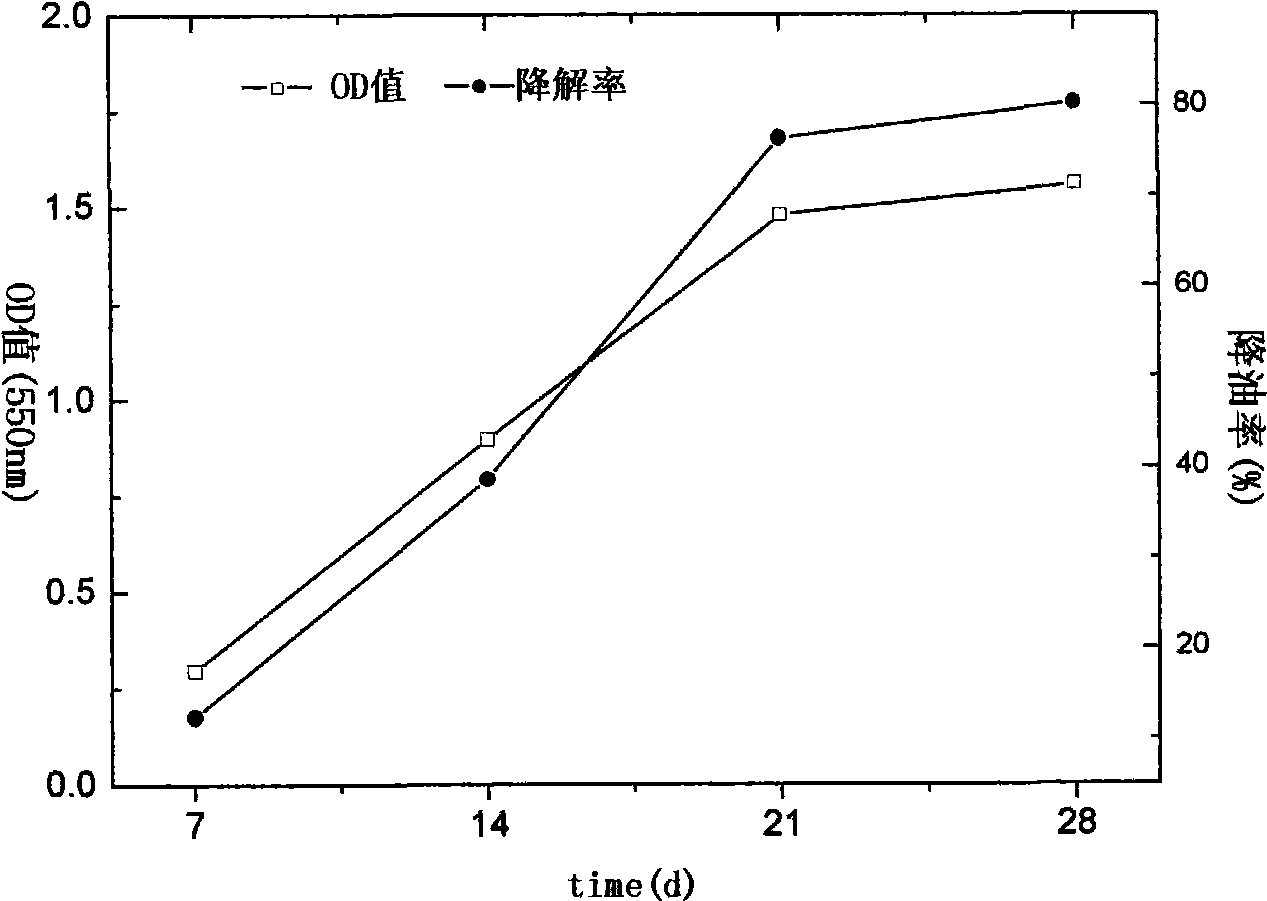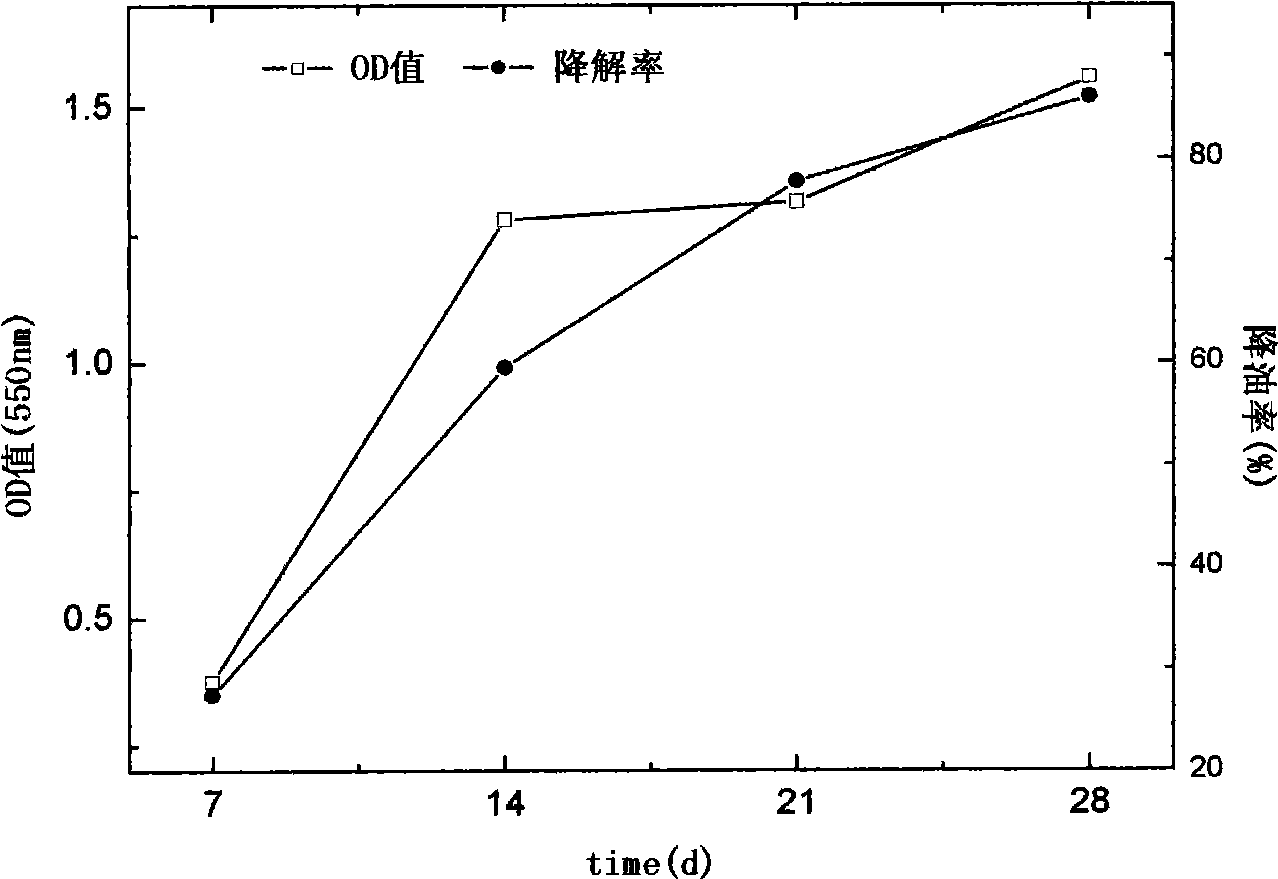Arctic bacteria strain for highly efficiently degrading crude oil and application thereof
A crude oil and strain technology, applied in bacteria, microorganism-based methods, and methods using microorganisms, etc., to achieve the effects of high degradation efficiency, easy cultivation and reproduction, and strong degradation ability.
- Summary
- Abstract
- Description
- Claims
- Application Information
AI Technical Summary
Problems solved by technology
Method used
Image
Examples
specific Embodiment 1
[0023] This strain has the characteristics of degrading crude oil and using it as the sole carbon and energy source. After activating the preserved strain for 3 days, inoculate it into a shaker flask containing 50mL of medium and 2‰ crude oil. Under the condition of 5°C, the shaker speed is 150r / min, and shake for 5 days to degrade the culture of crude oil by the strain. The liquid was extracted by n-hexane, and the GC-MS analysis showed that after degradation by strain P29, compared with the control, the degradation rate of 5 pairs of crude oil reached 41%.
specific Embodiment 2
[0024] Transfer the strains stored on the slant of nutrient agar to a mixture containing 5g / L peptone, 1g / L yeast powder, fresh water and seawater at a ratio of 2:1, MgSO 4 ·7H 2 O 0.025g / L, NaH 2 PO 4 0.5g / L, K 2 HPO 4 ·3H 2 O 1.0g / L; Agar 13~15g / L; Tween 802mL; On plate medium with pH6.0-8.0, streak culture. After culturing for 3 days at a temperature of 8°C, it was found that fuzzy halos appeared around the colonies. The above results show that there is a good correlation between the microbial degradation ability of oil and the production of lipase, which is consistent with the research results of microbial ecology and oil degradation in oil sewage irrigation areas. This study showed that Pseudoalteromonas sp. has lipolytic activity. All kinds of dominant microorganisms isolated from the oil-contaminated soil treatment system have lipolytic activity, and the strains with lipolytic activity have the ability to degrade petroleum hydrocarbons.
specific Embodiment 3
[0025] Get the soil (organic matter content 3.85%) polluted by crude oil in Shengli Oilfield, every gram contains 10mg of crude oil, join it in the inorganic salt culture solution (soil-water mass ratio=1:10), inoculate OD by 2% (v / v) 550nm =2.0 bacterial suspension, cultured with shaking at 5°C on a shaker (150r / min). Samples were taken at different times, the crude oil in the water-soil two-phase was extracted with n-hexane, the concentration of crude oil was measured by GC-MS, and the residual rate was calculated. The results showed that under the above conditions, the degradation rate of crude oil could reach 60% after culturing for 10 days.
PUM
 Login to View More
Login to View More Abstract
Description
Claims
Application Information
 Login to View More
Login to View More - R&D
- Intellectual Property
- Life Sciences
- Materials
- Tech Scout
- Unparalleled Data Quality
- Higher Quality Content
- 60% Fewer Hallucinations
Browse by: Latest US Patents, China's latest patents, Technical Efficacy Thesaurus, Application Domain, Technology Topic, Popular Technical Reports.
© 2025 PatSnap. All rights reserved.Legal|Privacy policy|Modern Slavery Act Transparency Statement|Sitemap|About US| Contact US: help@patsnap.com



